
Fine-Tuning B2B Campaign Targeting
Sip and Solve™ 15-Minute Webinar
In this 15-minute Sip and Solve session we talk about the power of segmentation and targeting, using industry SIC's and NAICS codes to optimize your marketing budget. Lately, tech companies have enacted privacy restrictions that make targeting business prospects harder, but it's not "game over" for marketers just yet. As you will hear in this insightful talk, Experian Product Manager, Tony Romero says there's still a lot to be optimistic about in terms of B2B marketing campaigns.
We will talk about:
Hi everyone. And welcome to another Sip and Solve. I'm Tony Romero, Senior Product Manager here at Experian. And today we'll be talking about how to fine tune your B2B campaigns. I have a cup with my coffee and I'll be ready to go here. So hopefully you'll find this information useful in the next 15 minutes.
So when you think about B2B campaigns, obviously the main objective is to generate high quality leads, and a lot of them, in order to help your sales force be able to close on business. You want to make sure that you're reaching the right audience at the right time. You want to make sure that you're maximizing your return on investment. And you want to make sure that you're measuring your success. What are your KPIs? And are you able to track those properly so that for the future you can improve on those campaigns.
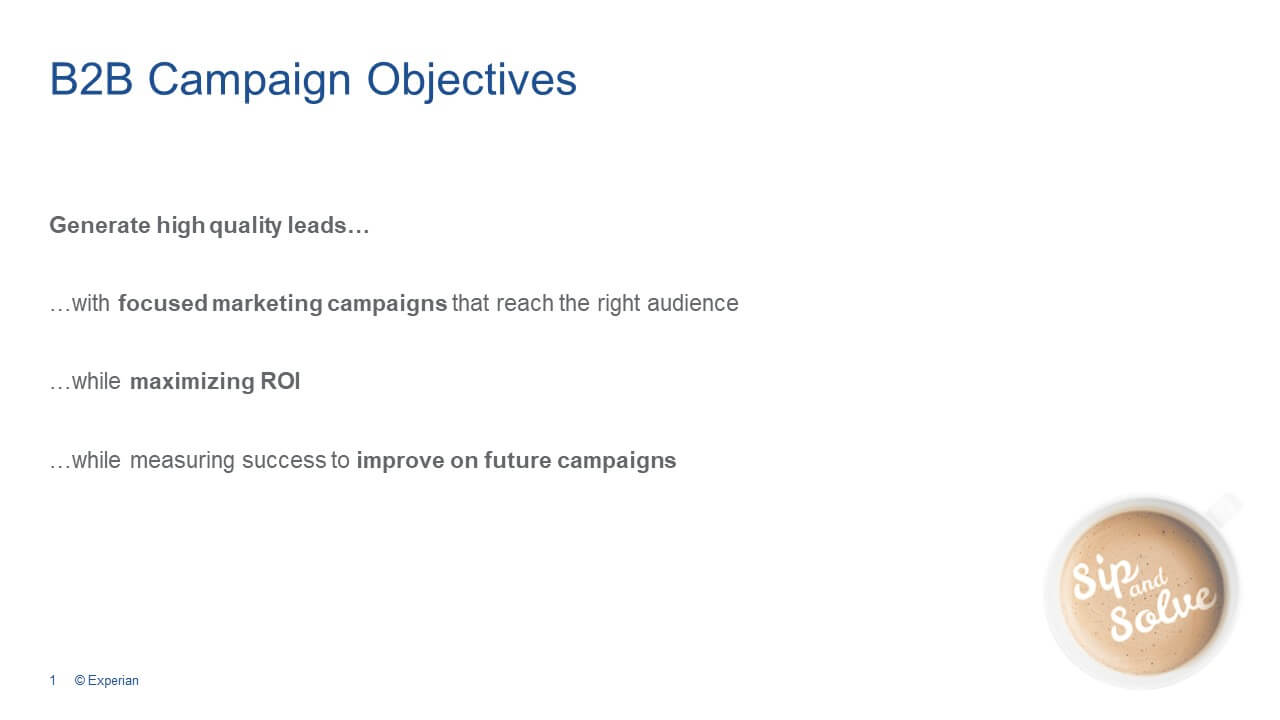
Now, when you think about a campaign, there's five major steps that you typically go through. The first one is definition. What is this campaign all about? Who are you trying to reach and why? So, you want to make sure that you've got the right data on your segmented audience so that you can reach them properly. You also want to make sure that you develop a campaign strategy that has all of the effective campaign tools that you need in order to reach them effectively.
Now, once you have that developed, you're ready to deploy. How do you make sure that you're reaching them effectively and that you really are actually, reaching them? The last thing you want is to have a high bounce rate on your emails. You want to make sure that you're measuring and tracking appropriately again, with all the KPIs I talked about, you want to make sure that you can use that data to then ultimately optimize for future campaigns.
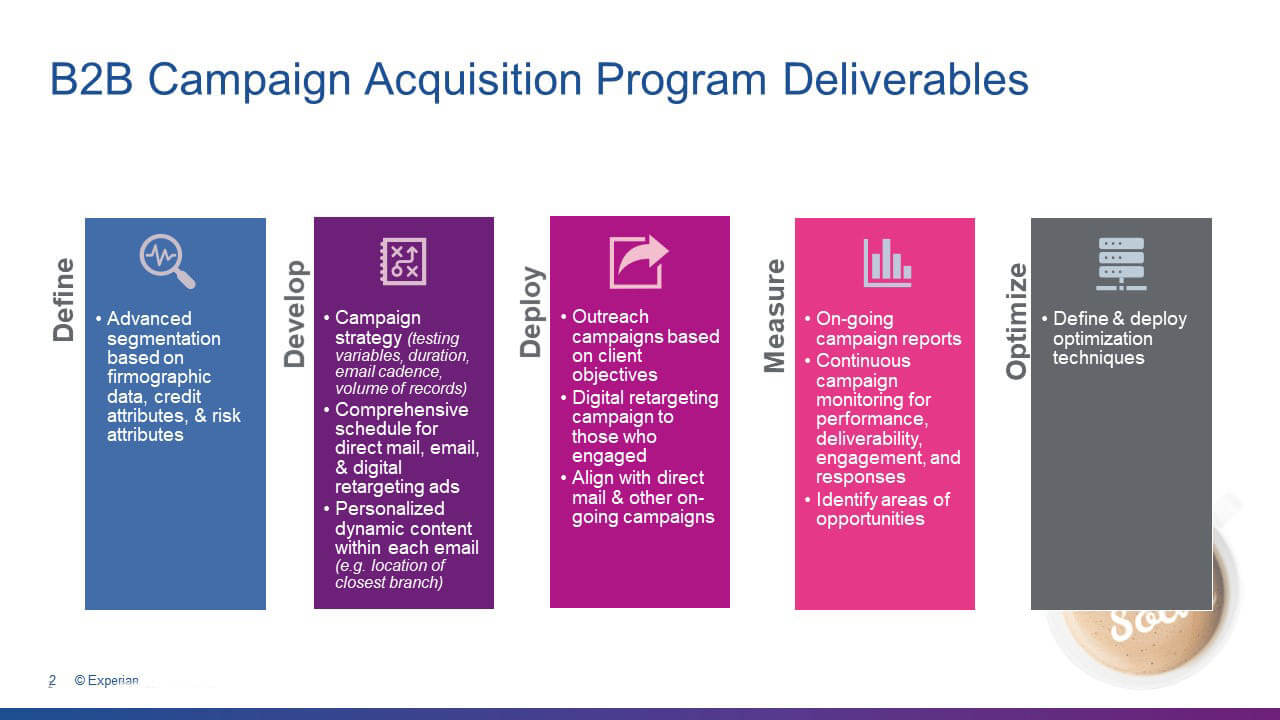
Now, what are some of the main challenges through each of these steps? Well, certainly in the strategy and planning phase, you want to make sure that you're defining what it is you're trying to do with this campaign effectively. And you want to make sure that you have a clear understanding of what is the data that you need in order to define your target audience.
And what is your budget? Also on outreach, you want to make sure that you're thinking about all the different campaign strategies that are going to be most effective to reach that audience. Are you reaching the right people, the right titles? Also you might want to think about running multichannel strategies.
A very effective campaign is to think about not just direct mail, but including that along with email or with digital and all those different type of touch points, reaching your audience helps to give that audience a good sense of the fact that you're communicating out to them. Sometimes when you only do one touchpoint, they simply forget that, that they had that outreach.
So by reaching out to them in multiple ways, they're remembering this campaign and they're remembering who you are and why you're trying to reach them. And the last challenge, as I've mentioned before, you want to make sure that you're tracking the right KPIs and how can you make sure that you use that for refining future strategies?
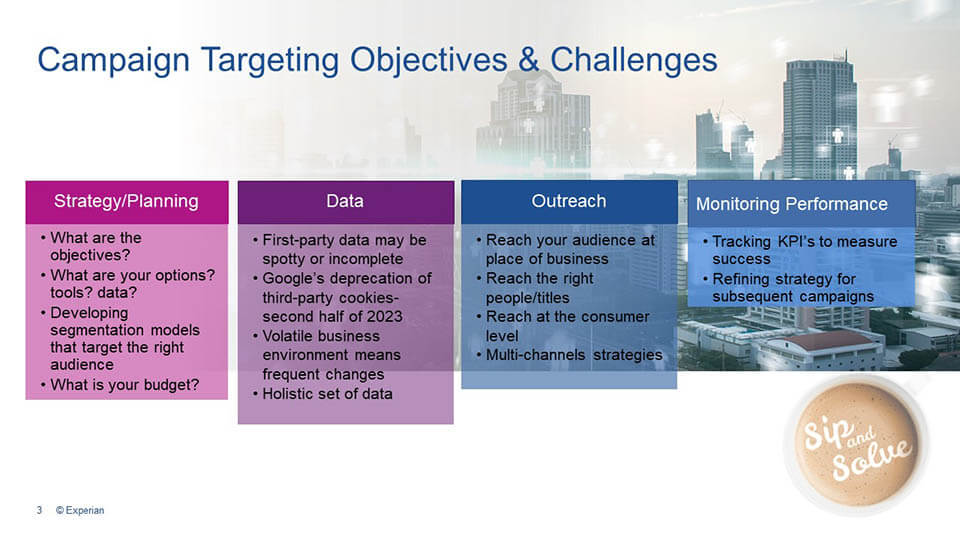
So in my previous Sip and Solve, I talked about making sure you had the right data. And I talked about marketing lead data credit, predictive scores, and Biz Aggs C2B. So the consumer to business data we talked about, minority-led and women-led businesses. So now let's dive into how can you use that data for effective marketing campaigns.
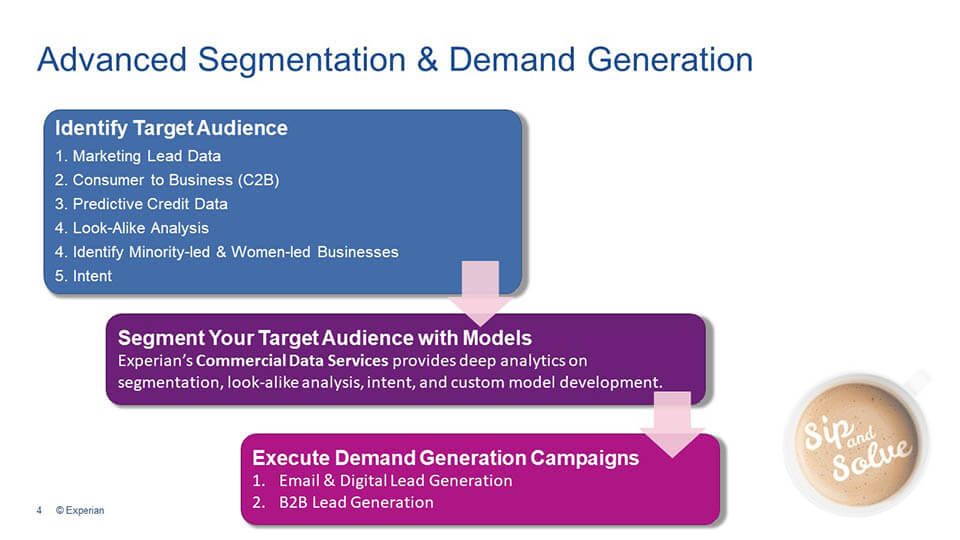
So the first one I want to talk about is doing a lookalike analysis, and this is basically saying, okay, you've got an existing set of customers who you've defined as ideal. Meaning they've got certain attributes, whether it's the fact that they're in certain industries where you're using NAICS codes or SIC codes or certain geographical areas or financial risk profiles, it could be a numerous number of attributes that are being used.
But now you've got a great way of defining your new segment, or your new target audience to segment after that, for your new campaigns. So, this is a great way Experian can help you do this type of analysis so you're segmenting properly.
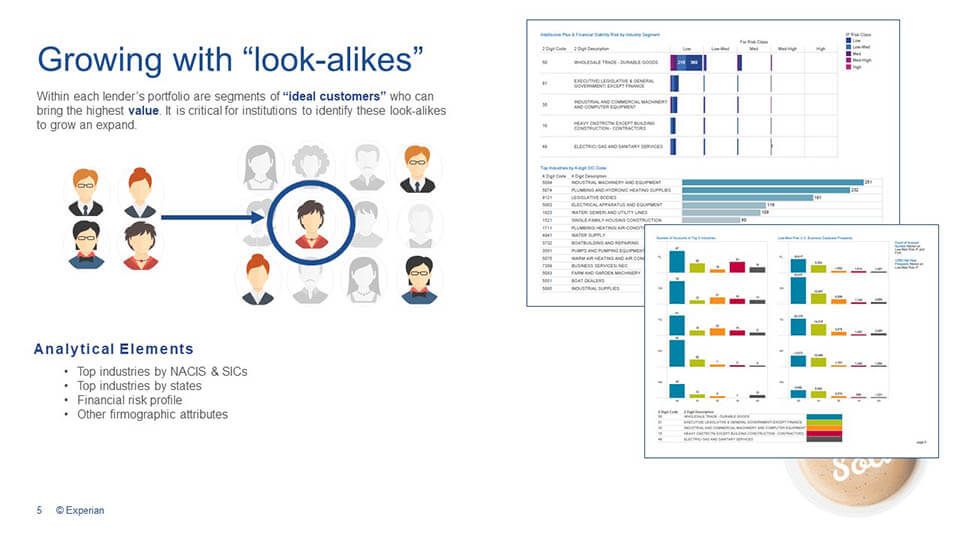
The next one is intent data, and this is a very important tool to be able to identify who's in market, and basically using activities that your target audience are doing themselves in order to reach out to them. Basically, if a person is out on the web, doing certain type of searches for certain things, or they're downloading content or they're on social media, these actually create signals that we can use to identify if there's current interest in your type of products.
And we have over 4,700 intent topics. What that means then is, for example, if you're trying to find companies who are looking for small business loans, or they're looking to set up their first credit card for their business or setting up new direct deposit. These are the type of intent signals that we can use to identify if this target audience is in market.
And it's a great way to boost your engagement. What some of the stats that we found is that you can boost by 16% and you can significantly increase your close rates up to 79%.
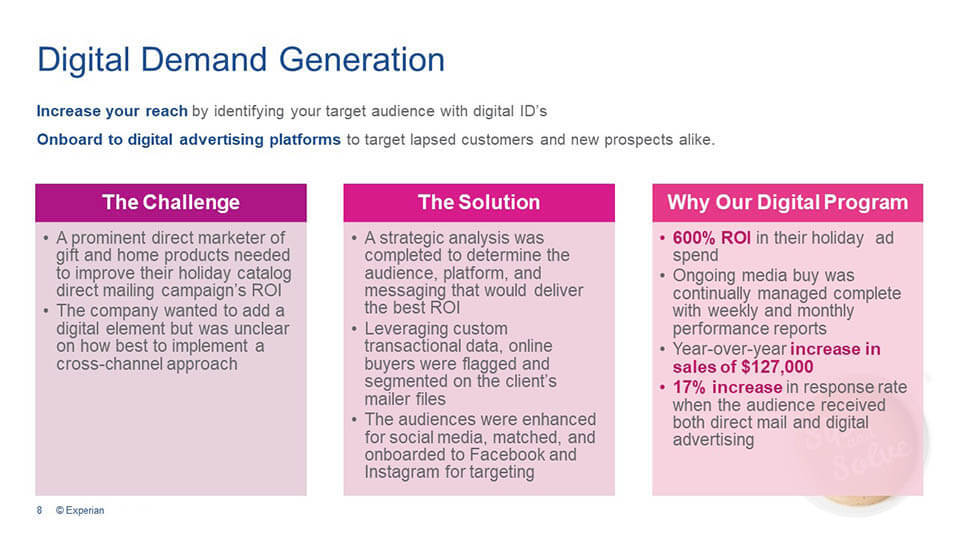
Now, emails are a very important campaign strategy. What we found is that 59% of business to business marketers use email as their top revenue generating campaign strategy. So we highly encourage you to think about all the different aspects of what you can do with email here.
The first one is email append, and what this is, is basically saying, okay, you've got your own existing customer list, but you might be missing some email information, or you may not be sure that the emails that you do have are the current emails, so we can make sure that we're appending the most current, correct emails to your list.
Secondly is email list generation, and this is saying, maybe you have a lookalike analysis and you now have a prospective audience that you want to go after and you want to make sure you have the most current and correct emails out there for these folks. So we can create a list of all of the prospective customers and their emails ready for your email campaign.
And then lastly, email acquisition, we can actually execute your email campaigns for you if you would like. And, along with that, we're tracking all those KPIs that I talked about. So for example, being able to measure deliverability, what's the open rates, how many clickthroughs, how many people landed on your site?
You know, those are all very key, important things to think about. Another thing too, to make sure you're thinking about with emails is that you need to make sure that you're doing multiple touch points. What we typically like to suggest is that you have three touch points over maybe three weeks. And that means that the first time they see it, they're going, okay, I see the message, but then they see it again and then they see it again. And that helps to really make sure that they're absorbing the information that you're trying to reach out to them. What we've seen is a 4,200% ROI in most cases--where for a dollar invested, we see a $42 return on an email. So a very effective way to generate revenue.
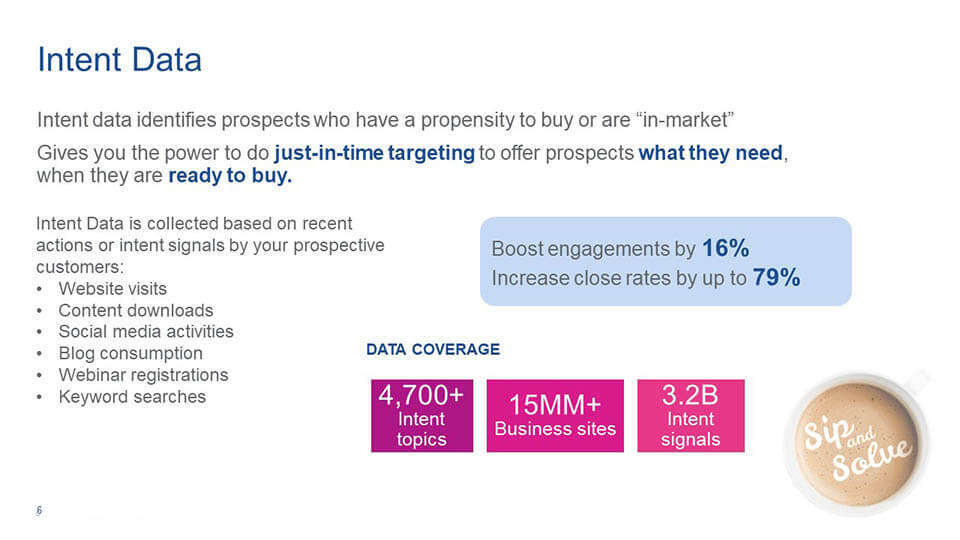
Along with email, another one to think about is digital display and what this is, is that we're capable of taking your existing list of prospects and onboarding them with a digital ID. What this allows you to do is then be able to display ads with your products and services, as well as on social media.
So we have a use case here that I'd like to describe. Where this one company, they deliver home goods and gifts. And in one holiday season, they decided to enhance their direct mail campaign by adding digital. And this allowed us to do digital displays as well as social media.
And ultimately what we saw was a 600% return on their investment spend. So very, very positive. They saw an increase of $127,000. Which ended up being a 17% increase in the response rate. So again, another very effective way to reach your audience.
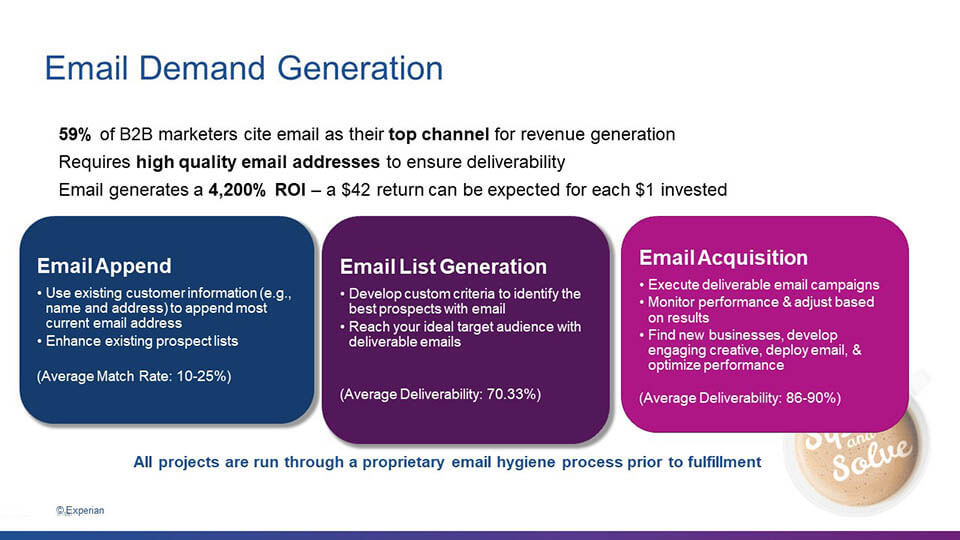
Another key campaign strategy is business to business lead generation. Also, you might have heard content syndication as another term for this. This is a great way to generate marketing qualified leads or MQL's. And what we've seen is that this helps to shorten the sales cycle by 25%.
Now the way these work is again, this is like an email campaign, where we're sending out emails to your targeted audience. But in addition to that, the call to action is to basically download an asset that you might have that has value or significance to your targeted audience.
This could be a white paper. It could be a case study. It could be a video, could be anything really to compel that user to engage further with your products and services. And along with that, once they're actually on your site, they can fill out a form with all of their contact information. Maybe some firmographic information, anything you need to be able to collect the right data that you need.
And then lastly, to have agents contact these individuals in order to verify what their interest level is. And by nurturing your MQLs you can get them to the point where they're actually sales qualified leads, ultimately, which is really key in order to be able to do effective campaigns to get to your sales close rates.
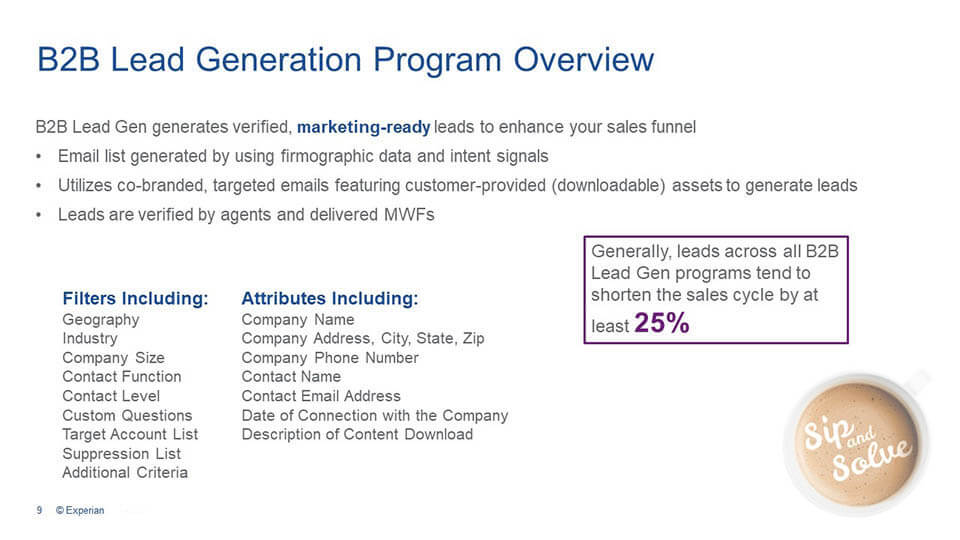
So the key takeaways, when you're thinking about your target audience, make sure that it's a holistic view, all the different data points that I talked about, also think about all the different B2B campaign strategies I talked about. And make sure that they're data driven both on, on the upstream side, where you are using data, to be able to segment your audience correctly, that you're using data, to be able to identify how to set up your campaign strategies effectively, and then downstream, using data to measure the success, and measuring your key performance indicators and making sure that you're reaching significance, and then use those for takeaways for learnings for your future campaigns.
You know, lastly, I can't stress enough. Don't try to take this on yourself. There's a lot to developing effective campaigns and we're here to help. And we're also here to make sure that you're focused on your return on investment.
Well, that's all I have for you for today. So thank you so much for spending your coffee break with me. Hopefully I was able to help you with your campaign strategy. If you would like to gain some more information, why not join our private group on Facebook? You can also engage with our experts, access exclusive content and chat with peers.
Just scan the QR code. Also, if you want to get notified of future sessions, just make sure to join our list. Thank you so much. Now it's time to get back to work.
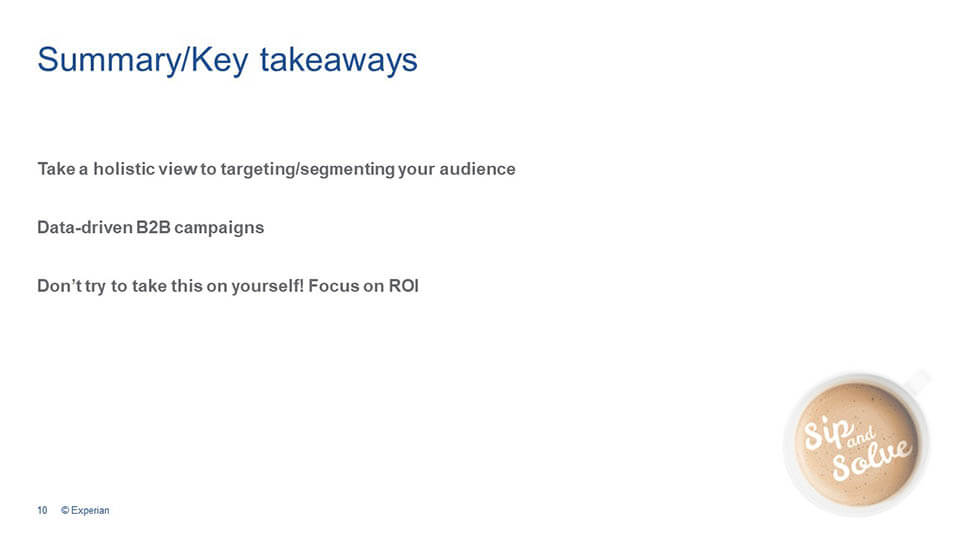

Tony recently joined the Experian BIS team as a Senior Product Manager. He has experience in product lifecycle management, product ideation and strategy, business development, forecasting, performance management and data-driven decision-making, and more.
Tony says, "As a Product manager, it is critical to properly define the criteria to success and key performance indicators. Defining these metrics, collecting and analyzing the data, and testing out options provides the level of preparation and data-driven decision-making required by a Product Manager to lead with confidence for new initiatives, develop roadmaps and drive it to success."